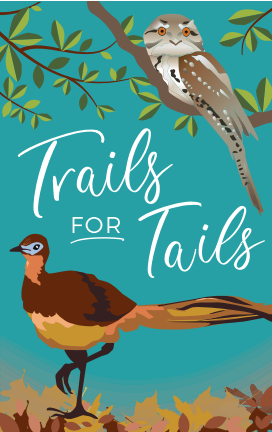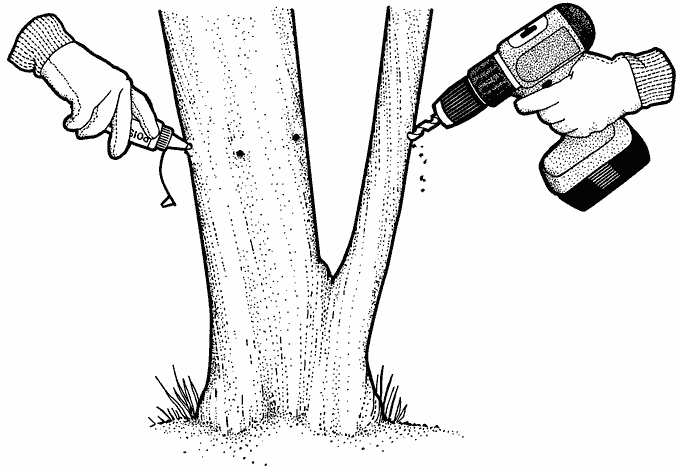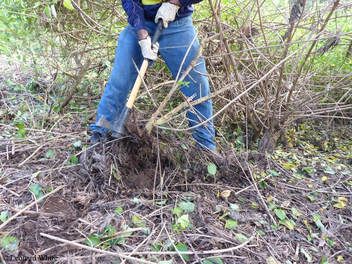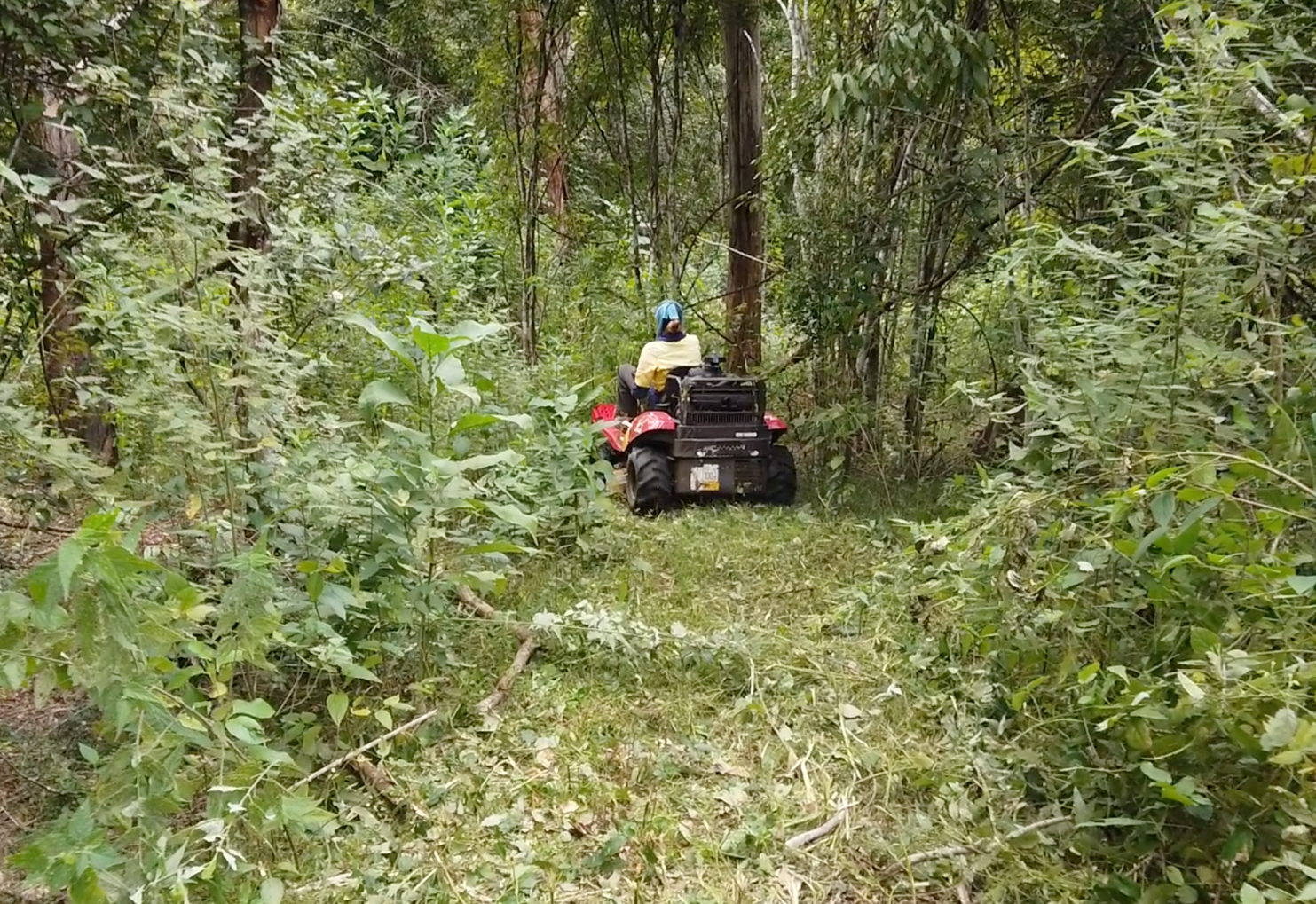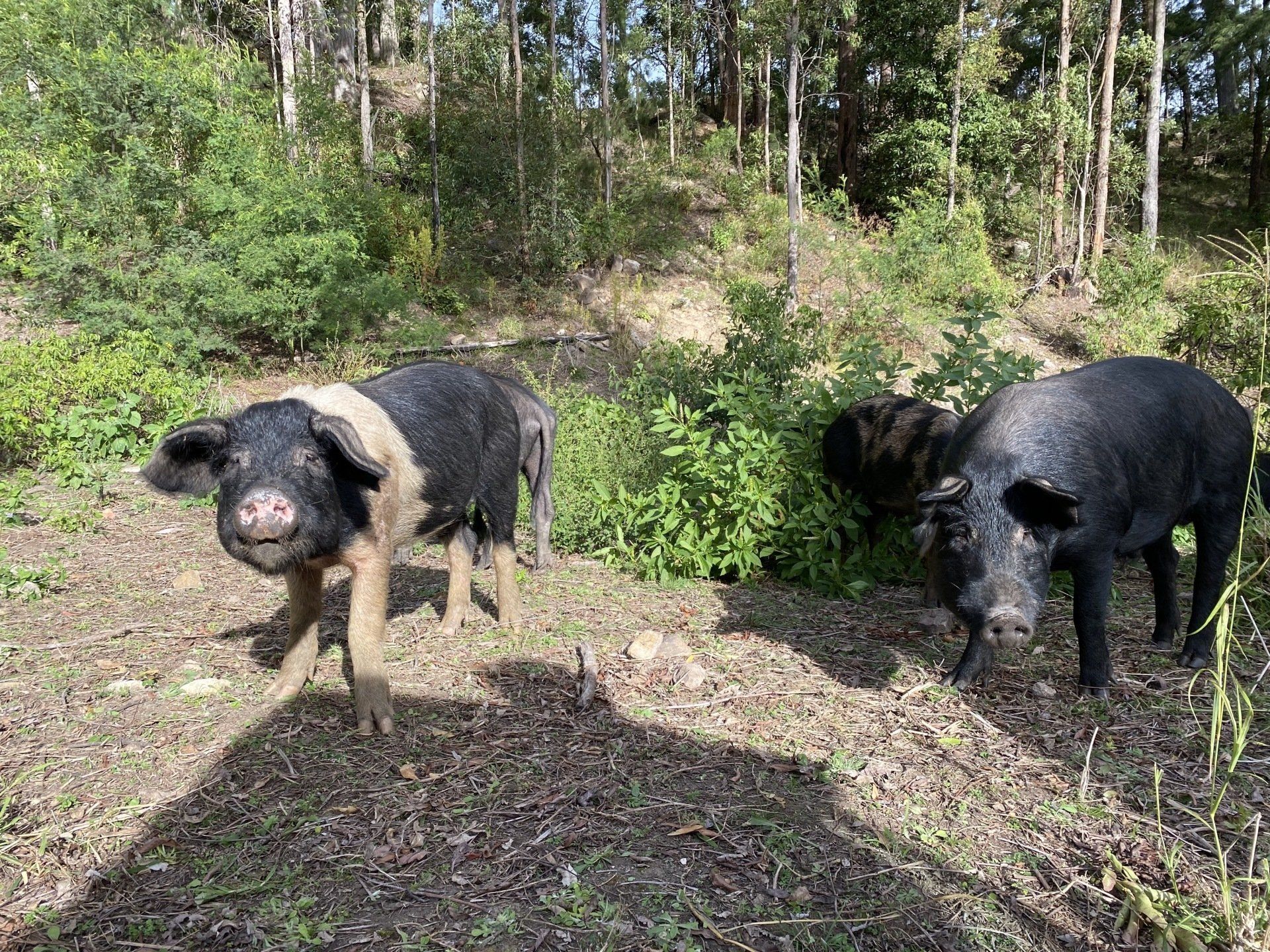War Against Lantana
Lantana forms dense thickets that exclude native species, leading to its complete dominance of the understorey and eventually the canopy. Causing an estimated $17.1 million a year for graziers to manage, Lantana needs to be controlled to ensure native species survival
The Issue
The Challenge
The Story
The Response
Chemical Options
Foliar Spray
Foliar spraying of herbicide is used to achieve the strategic control of weeds on a small to large scale with a minimal level of disturbance. Spraying is used to control weed seedlings, saplings, low growing vines, weed thickets and low shrubs. Foliar spraying provides a means of controlling weeds which would otherwise be difficult, costly or unsustainable to remove by hand– based methods. Foliar spraying can be undertaken as primary and/or follow up weed control. For the effective spray treatment of most weed species, it is important that the foliage of the target weed is well covered, but not dripping with herbicide. Only spray weeds that are actively growing and not drought stressed, otherwise herbicide uptake will be limited.
Splatter Gun
The splatter gun is a gas powered or manually operated injector kit. The gun delivers herbicide in large droplets as a stream or splatter. It is used to apply herbicide (glyphosate or metsulfuron methyl) across large areas of weed thicket e.g. Lantana (at 1:9 with water), Bitou Bush (at 1:19 or 1:29) or Groundsel (at 1:9). The addition of sticker oil and dye is recommended. For dense Lantana thickets, only 6ml of solution is required for every square metre of foliage. Other benefits of the splatter gun are that large and difficult–to–access areas of infestation can be treated quickly by an operator. There is less potential for off–target impacts (to insects and understorey plants), when compared with blanket or overspray methods which require spraying of the entire bush.
Stem Injection
The stem injection technique is used to control shrubs and trees or very large woody vine weeds. Stem injection has the benefit of leaving tree biomass standing in situ which can provide perches for bird seed dispersers and saves dealing with the debris of felled vegetation. However, the technique should only be used where falling limbs will not compromise public safety e.g. best in forested areas and away from pedestrian activity or infrastructure that may be damaged by limb or tree fall. Stem injection describes the application of herbicide to cuts (frilling) or drill holes (drilling) to the lower basal circumference of a tree stem or trunk. The herbicide is delivered using a stem injector kit, spray pack or sidewinder/pressurised injector.
Cut Stump Method
The cut and paint technique is used mainly on woody weeds. Cut the stem down low as close to ground level as possible (yet keeping soil away from cut surface) and immediately apply herbicide onto cut surface with an injector kit, dripper bottle or paint brush. Generally 100% glyphosate or diluted with water at 1:1.5 is used for cut and paint applications. Failure to apply herbicide quickly will reduce the effectiveness of uptake. Cut stumps must be cut as low to the ground as possible to minimise hazards to workers. Do not cut at a sharp angle as this will create a ‘spear’ that can impale or create a trip hazard.
Cut Scrape Paint Method
This is mainly used for vine weeds such as Madeira Vine (and for other species – see notes below). It is important not to sever the vine stem but to keep the stem intact when using this method. Treating vine weeds by scraping and painting and leaving intact may allow for the translocation of herbicide through the plants system, including the underground storage organs or aerial tubers. Deeply scrape the vine to about one third the thickness of the stem and paint with 100% (neat) glyphosate immediately. Scrape as much length of the vine stem as possible. Herbicide can be applied with a paint brush used with a poison pot.
Physical and Mechanical Options
Hand Pulling
Will work on small infestations, isolated plants, regenerating areas and in steep areas that machinery cannot access. The best time is after rain when soil is moist. Wear gloves when hand pulling. Grub out roots with a mattock or hoe, then roll and haul the stems and roots away. Remove the roots and stems or the lantana will regrow.
Bull dozing or Slashing
This will remove large bushes, and help access through infestations. However the plant will regrow. Avoid disturbing large areas at any one time to avoid leaving large areas of bare ground, risking soil erosion. Revegetate and monitor bare areas for regrowth.
Fire and Biological Control
Fire
Fire is often used prior to mechanical
or herbicide control to improve their
effectiveness, or as a follow-up to such
methods. Fire is relatively inexpensive and well suited to dense infestations, but the
risks to people and property must be
carefully managed. Burning is not
recommended in rainforest and vine
thickets because they're highly sensitive
to fire. Disturbance in these habitats may
actually promote lantana if the canopy
is opened up. A permit may be required
to burn – check with your local council or
state/territory weed management agency
Biological
The biological control agents vary in
their effectiveness against the many
different types of lantana. For example,
lantana can drop its leaves when stressed,
depriving some agents of their food. Of the 16 species that have established,
four insects have had a major impact
on lantana. They are:
• a sap-sucking bug (Teleonemia
scrupulosa) (Sydney to northern
Queensland).
• a leaf-mining beetle (Uroplata girardi)
(northern Queensland to Sydney).
• a leaf-mining beetle (Octotoma
scabripennis) (Sydney to south of
Rockhampton).
• a seed-feeding fly (Ophiomyia
lantanae) (southern New South
Wales to northern Queensland).
For more information on where this information is from, follow the links below
